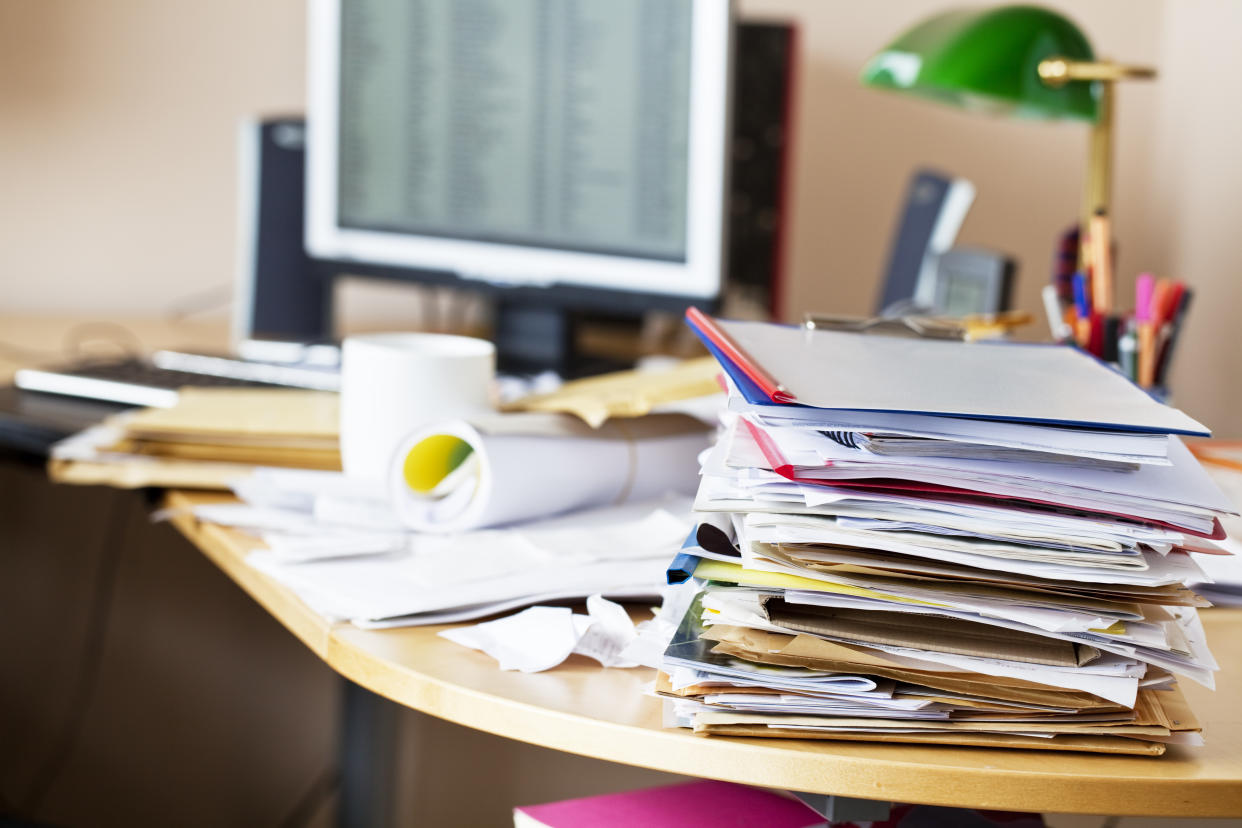Is your home filled with DOOM piles? What to know about the 'didn't organize, only moved' habit — and how to clear out clutter.

Do you find yourself tossing your just-worn sweatshirt onto a growing heap of clothes? Or maybe adding another piece of mail to an already sky-high stack on your kitchen table? If so, you’ve been creating a DOOM pile — aka a “didn’t organize, only moved” mound that may reveal something about your mental health.
“DOOM pile” isn’t a clinical term. The phrase began circulating on social media sometime around 2022, with many people on TikTok and other platforms sharing their own experiences with these instances of clutter — particularly those living with ADHD, who tend to struggle with these piles more than others.
Here’s what to know about DOOM piles — and how you can avoid or break the cycle of clutter.
Why do we create DOOM piles?
If you find yourself regularly dealing with DOOM piles, you may wonder why you’re prone to creating these heaps.
Psychologist Michele Leno tells Yahoo Life that for many people, DOOM piles are a sign of being distracted or overwhelmed. This can happen to anyone: A super-busy work project, for example, may leave you with more DOOM piles than in a week when you have more time to focus on organizing your space. But one DOOM pile can lead to another, says Leno, as “the more piles you create, the more difficult it becomes to get to tackle the job.”
What does it mean if you’re regularly creating these DOOM piles, however? Leno says that this ongoing type of messiness is often associated with low motivation, inability to get going on other tasks, and, in some cases, personal care neglect, which could indicate a deeper issue — especially if this messiness is disruptive or deviates from your typical behavior. Depression can cause executive function issues, or problems managing, organizing and completing tasks. If you can’t muster up the energy or willpower to tidy up due to depression, you could see more DOOM piles around your home.
It’s important to note that lack of tidiness is not always synonymous with poor mental health, Leno says. Someone could be very organized but still depressed, or disorganized but mentally well, which is why DOOM piles aren’t always an indicator that something is wrong.
Instead of self-diagnosing, Leno says, it’s best to consider why you’re DOOM piling in the first place. Are you in a busy season, or feeling stressed out or under the weather? If these DOOM piles aren’t a common occurrence and they’re not interfering with your life in a significant way, you probably just need to find time to organize.
What’s the connection between DOOM piling and ADHD?
Regularly creating DOOM piles is common for people with attention deficit hyperactivity disorder, says Liora Seltzer, a professional organizer and parent mentor who focuses on helping families whose children have ADHD. If DOOM piles are causing issues in your life and you feel unable to get a handle on them, you may consider getting screened for ADHD.
For people with the disorder, DOOM piles are often “a sign you are having a hard time making decisions about the items, or dread doing the tasks involved, like calling the doctor, paying a bill, filing papers or writing a card,” Seltzer explains. “Every item can lead to an action that you simply can’t bring yourself to do.”
ADHD is defined by issues with executive function, and psychiatrist Dr. Frank Anderson tells Yahoo Life that “procrastination, mental overwhelm, mental blocks and anxiety” are all common features of the disorder. It all has to do with dopamine, a neurotransmitter that plays a key role in regulating attention, motivation and the ability to focus. When dopamine levels are low, as they often are with people with ADHD, initiating and following through on tasks becomes even harder — this is called ADHD paralysis. Additionally, people with ADHD may get easily distracted from tasks (like putting away laundry) by something more stimulating or rewarding to their brains (like, say, playing video games).
How can we avoid DOOM piling?
For people who are prone to messiness and want to improve, Leno says that these tips can help keep items out of DOOM piles:
Make sure your piles are visible to prevent the “out of sight, out of mind” issue.
Set a date and time when you will put things in their rightful place.
Determine where you will place a new item before you buy it.
Stop at one DOOM pile so it’s easier to manage.
Seltzer says one way people with ADHD can help themselves clear out their DOOM piles is by gamifying the situation. Set a timer for 15 minutes and try to clear as much out of the pile as possible before it goes off. Challenging yourself to finish the task in that time can give you a boost of dopamine, which is something people with ADHD may need in order to accomplish their goals.
Social media is also full of people providing tips for how they manage their own ADHD DOOM piles. One recommendation from a TikTok creator is to use bins for your DOOM piles so that all your extra stuff is in one place, as opposed to strewn about your home.
If you believe you’re dealing with mental health issues, such as depression, that may be connected to why you’re creating these piles in the first place, speak to a medical professional who can find you the right support.


